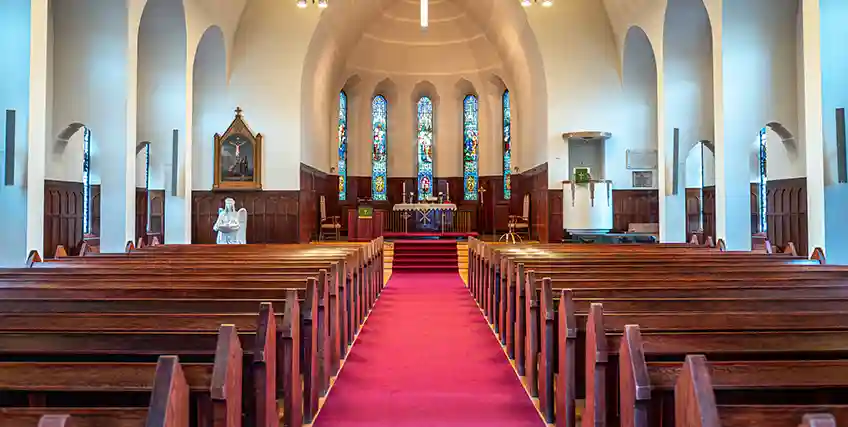Understanding Nonprofit Lending for Religious Entities
May 20, 2025 | Last Updated on: May 21, 2025

Religious organizations are a vital part of communities across the globe. From houses of worship to faith-based schools and charities, these entities often rely on external funding sources to finance construction, renovation, or expansion projects, as well as to maintain daily operations. One significant financial avenue available to them is nonprofit lending. This article provides a comprehensive overview of nonprofit lending tailored specifically to religious entities, exploring its unique characteristics, challenges, and opportunities.
Introduction to Nonprofit Lending
Nonprofit lending refers to the practice of providing loans to organizations that operate on a nonprofit basis. These loans are structured differently from commercial lending and are designed to accommodate the missions, financial structures, and limitations of nonprofit organizations. For religious entities, nonprofit lending must further consider factors such as tax-exempt status, donor-driven revenue, and governance by faith-based principles.
Religious entities, although nonprofit, often face additional hurdles in accessing capital. They may lack conventional collateral, operate with seasonal or donation-based cash flow, and face legal constraints due to the separation of church and state in some jurisdictions. However, financial institutions and specialized lenders have developed business loans for nonprofit organizations solutions to support the unique needs of these organizations.
Types of Religious Entities Eligible for Nonprofit Lending
Before exploring nonprofit lending options, it’s important to understand what types of religious organizations may qualify:
- Churches and Places of Worship: These include congregations of all faiths—churches, mosques, synagogues, temples—recognized as 501(c)(3) organizations in the United States or their equivalent in other countries.
- Faith-Based Schools: Religious schools providing primary, secondary, or higher education, often affiliated with a religious denomination.
- Religious Charities and Outreach Ministries: Organizations that operate food banks, homeless shelters, addiction recovery programs, and other community services.
- Religious Orders and Retreat Centers: Monasteries, convents, and retreat spaces that serve religious or spiritual purposes.
These entities often share a common characteristic: their mission is rooted in spiritual or religious values rather than profit generation.
Why Religious Entities Seek Loans
Despite their nonprofit nature, religious entities face financial needs similar to those of for-profit organizations:
- Building Construction and Renovation: Expanding congregations or aging infrastructure often necessitates new buildings or major renovations.
- Land Acquisition: Growing ministries may require more land for parking, recreation, or facilities.
- Operational Support: Short-term loans may help cover payroll, utilities, or other operational expenses during periods of low donation income.
- Refinancing Existing Debt: Lower interest rates or better terms may prompt a religious organization to restructure existing debt.
While donations and fundraising remain vital, they are not always sufficient to meet larger capital requirements. Nonprofit lending provides a strategic financial tool to bridge funding gaps.
Unique Challenges in Lending to Religious Organizations
Religious organizations face several unique challenges when it comes to securing nonprofit lending:
1. Irregular Revenue Streams
Most religious entities rely heavily on tithes, offerings, and donations. These sources can be inconsistent and influenced by seasonal attendance, economic downturns, or shifts in congregation demographics. Lenders may see this as a risk factor unless there is a proven track record of financial stability.
2. Lack of Tangible Collateral
Many religious organizations do not own high-value assets aside from their property. In cases where the property is the primary collateral, lenders may be cautious due to the public relations risks and legal complexities involved in foreclosing on a religious institution.
3. Governance and Decision-Making Structures
Religious organizations often have complex leadership and governance structures, involving boards, denominational oversight, or congregational votes. This can complicate the nonprofit loan company approval and repayment processes, especially if changes in leadership occur.
4. Legal and Tax Considerations
In the U.S., religious organizations are exempt from filing Form 990 with the IRS and may have fewer financial transparency requirements. While this benefits the organizations, it poses challenges for lenders attempting to assess financial health.
Additionally, the Johnson Amendment prohibits 501(c)(3) organizations, including religious entities, from engaging in certain political activities, which can affect their public funding or lending eligibility.
Lenders Specializing in Religious and Nonprofit Borrowers
A number of financial institutions and nonprofits specialize in serving the religious and nonprofit sectors. These include:
- Faith-Based Credit Unions and Banks: Some institutions are affiliated with denominations and understand the unique needs of religious borrowers.
- Community Development Financial Institutions (CDFIs): These lenders often have missions aligned with community development and may offer flexible terms.
- Bond Issuers and Investment Banks: For large-scale projects, some religious institutions issue tax-exempt bonds through conduit issuers or religious organizations.
- Denominational Loan Funds: Many religious denominations have internal loan funds supported by member churches, offering favorable terms to affiliated congregations.
Choosing the right lender often depends on the size and scope of the project, the denomination's affiliations, and the organization’s financial track record.
Key Features of Nonprofit Loans for Religious Entities
The structure and terms of business loans for not for profit organizations often differ from those offered to for-profit businesses:
1. Loan Terms and Interest Rates
Interest rates may be lower than those in commercial lending, especially if the loan is provided by a faith-based or mission-driven lender. Loan terms can range from short-term bridge financing to long-term mortgages spanning 15–30 years.
2. Flexible Underwriting Criteria
Unlike traditional commercial loans, loans for not for profit organizations often evaluate qualitative factors, such as the organization’s mission, community impact, leadership strength, and congregation engagement, in addition to financial metrics.
3. Covenant Light Agreements
Some lenders offer “covenant light” agreements, reducing restrictive covenants that could trigger default due to minor deviations in financial performance. This offers greater flexibility during periods of instability.
4. Capital Campaign Integration
Lenders may structure loans in tandem with capital campaigns, where projected donor pledges are used as part of the repayment plan. This integration can make financing more attainable, though it requires disciplined donor follow-up.
5. Tax-Exempt Bond Financing
For large-scale developments (e.g., new campuses or major expansion), some religious entities may pursue tax-exempt bond financing. These instruments can offer lower interest rates due to their tax-free status for investors.
Steps in Securing Nonprofit Lending
Religious organizations seeking a loan should follow a structured approach to improve their chances of success:
Step 1: Assess Financial Readiness
Conduct internal audits, prepare financial statements (even if not required by the IRS), and demonstrate consistent income through donations or other revenue sources. Cash flow forecasts are essential.
Step 2: Clarify Project Scope and Costs
Define the project clearly—whether it’s a renovation, new building, or debt refinancing—and obtain professional estimates to avoid under-budgeting.
Step 3: Prepare a Capital Campaign (if applicable)
Engaging the congregation or donor base through a capital campaign can demonstrate community buy-in and increase confidence for lenders.
Step 4: Identify and Approach Lenders
Research lenders who specialize in faith-based or nonprofit lending. Compare interest rates, terms, fees, and services. Consider engaging a financial advisor experienced in religious nonprofit finance.
Step 5: Negotiate and Close
Work closely with legal and financial advisors to review nonprofit lending terms, covenants, and repayment schedules. Once approved, the closing process will include legal documentation and possibly lien registration.
Best Practices for Managing Religious Organization Loans
Securing nonprofit lending is only the beginning. Proper management is critical:
- Establish a Loan Oversight Committee: Create a dedicated team within the organization to monitor repayment, compliance, and communication with the lender.
- Maintain Financial Transparency: Provide regular financial reports to leadership and members, even if not required by law.
- Build a Reserve Fund: Unexpected financial setbacks can occur. A reserve fund helps buffer shortfalls.
- Stay Compliant with Covenants: Understand and track loan covenants to avoid triggering penalties or technical default.
Conclusion on Nonprofit Lending
Nonprofit lending for religious entities offers a vital lifeline for faith-based organizations looking to grow, sustain, or modernize their ministries. While these institutions face unique challenges—irregular income, lack of traditional collateral, complex governance—they also benefit from a network of mission-driven lenders who understand their values and operational dynamics.
With careful planning, transparent governance, and the right lending partner, religious entities can access the financial resources needed to serve their communities and fulfill their spiritual missions. Understanding the nuances of lending to nonprofits allows these organizations to steward resources wisely while navigating both the financial and spiritual dimensions of growth.
FAQs About Nonprofit Lending
Can faith-based schools qualify for nonprofit lending?
Any religious schools that provide primary, secondary, or higher education, often affiliated with a religious denomination may be able to qualify for nonprofit lending.
Are religious organizations exempt from taxes?
In the U.S., religious organizations are exempt from filing Form 990 with the IRS and may have fewer financial transparency requirements.
What are the nonprofit lending underwriting criteria?
Unlike traditional commercial loans, loans for not for profit organizations often evaluate qualitative factors, such as the organization’s mission, community impact, leadership strength, and congregation engagement, in addition to financial metrics.
Is collateral required for nonprofit lending?
Not all nonprofit lending requires collateral. Many religious organizations do not own high-value assets aside from their property. In cases where the property is the primary collateral, lenders may be cautious due to the public relations risks and legal complexities involved in foreclosing on a religious institution.
Are there banks that are associated with religious organizations?
There are banks and credit unions that are affiliated with denominations and understand the unique needs of religious borrowers.




